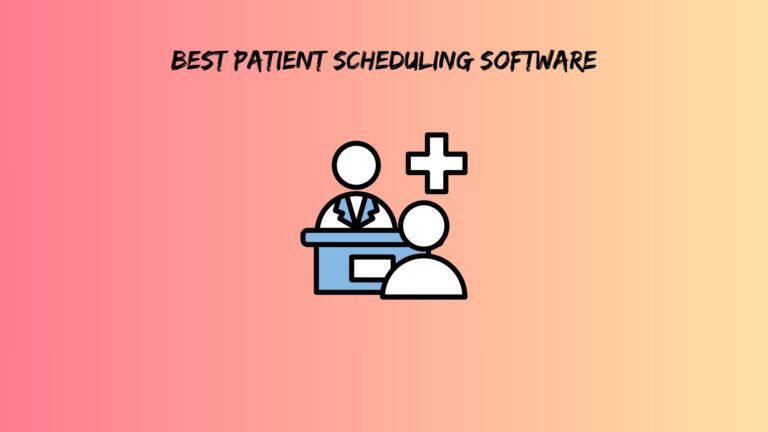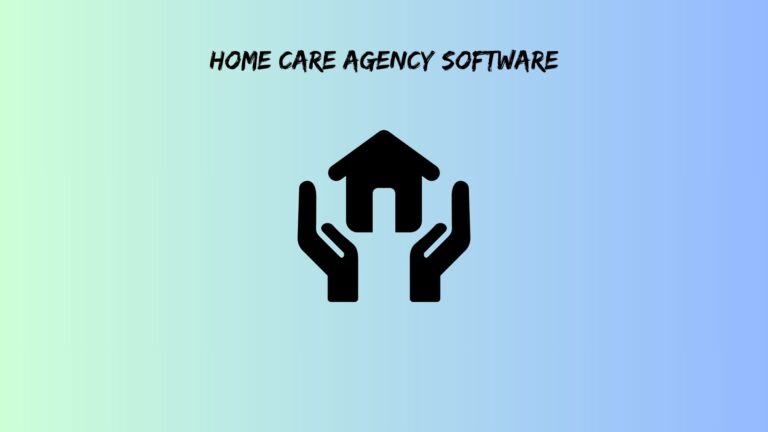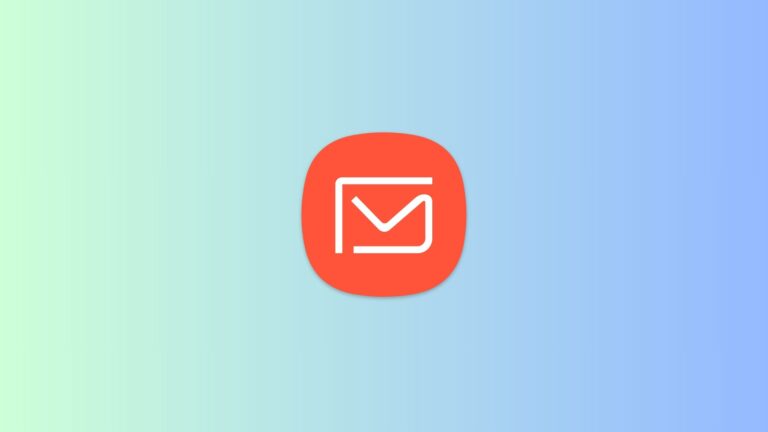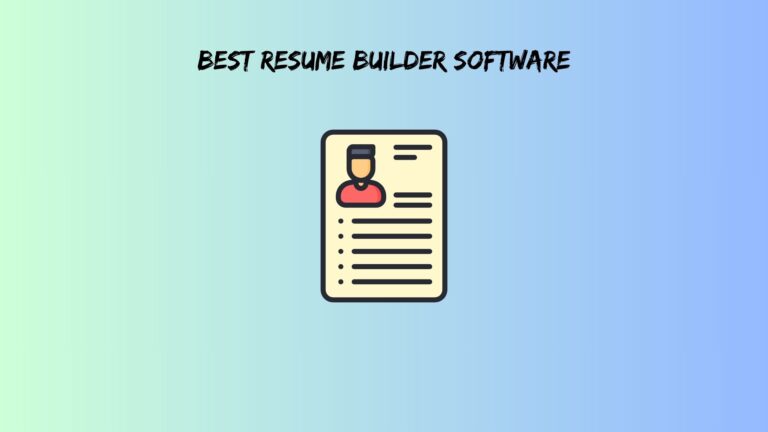7 Best Email Tracking System in 2025 (For Sales, Marketing & Outreach)
Here’s a mind-bending stat: 23% of your sales emails vanish into digital purgatory without you even knowing they bounced. Meanwhile, you’re crafting follow-ups for prospects who never saw your original message. This madness ends today with the best email tracking system options that show you what happens after hitting “send.”
Forget basic open rates – these tools reveal the hidden psychology behind every click, forward, and delete.
The Email Tracking Revolution: Why 2025 Changes Everything
Apple’s iOS Mail Privacy Protection just nuked traditional tracking methods. Those reliable “opened” notifications? Now they’re about as accurate as weather forecasts from a magic 8-ball.
However, smart email tracking software adapted fast. Instead of relying on pixel tracking alone, modern systems use behavioral analysis, engagement scoring, and cross-platform detection. The result? More accurate insights than ever before.
GDPR compliance also forced innovation. Top email tracking tools now offer consent management and transparent data collection. This shift benefits everyone – users get privacy protection while businesses receive higher-quality engagement data.
Real-time behavioral triggers have replaced basic notifications, too. Rather than knowing someone opened your email, you’ll discover they forwarded it to their boss, clicked three links, and spent four minutes reading. That’s actionable intelligence, not vanity metrics.
Also read: best sms and email marketing platform
Choosing Your Email Intelligence Strategy: Beyond Basic Opens
Mission-Critical Tracking Features
Multi-device engagement mapping shows the complete picture. Your prospect might open your email on mobile, forward it to a desktop, and click from their tablet. Advanced software to track emails connects these dots automatically.
Behavioral scoring beats simple open rates every time. Systems now analyze reading time, click patterns, and engagement frequency to create meaningful prospect scores. This approach helps prioritize follow-ups based on genuine interest levels.
Real-time notifications matter most when they’re smart. Instead of alerting you about every email open, the best email tracking tools notify you when prospects show high engagement. Think multiple opens, link clicks, or forwarding behavior.
Geographic and temporal patterns reveal optimal outreach timing. Discovering your prospects consistently engage at 2 PM PST on Tuesdays transforms your entire email strategy.
Advanced Intelligence Capabilities
A/B testing automation with statistical significance removes guesswork from subject lines and content. Modern platforms automatically optimize campaigns based on engagement data rather than forcing manual split testing.
Predictive engagement scoring uses machine learning to identify which prospects are most likely to convert. This feature alone can double your email ROI by focusing efforts on qualified leads.
Email sequence optimization recommendations suggest the perfect follow-up timing based on individual prospect behavior. No more generic “follow up in 3 days” rules that ignore actual engagement patterns.
Implementation Blind Spots Most Teams Miss
GDPR consent management isn’t optional anymore. The best email tracking software includes built-in compliance features that protect your business while maintaining tracking accuracy.
Cross-platform tracking consistency requires careful setup. Many teams assume their software to track email opening works perfectly across all devices, then wonder why their data looks inconsistent.
False positive management becomes crucial as tracking gets more sophisticated. Advanced systems filter out automated opens, security scans, and bot activity that skew engagement metrics.
The 7 Best Email Tracking System That Move Needles
#1: Instantly – The Cold Outreach Dominator
Instantly dominates high-volume cold email campaigns with unlimited sending accounts and sophisticated deliverability protection. This platform handles what others can’t – massive outreach without landing in spam folders.
Perfect for: Sales agencies and teams running 10,000+ monthly emails across multiple campaigns.
The AI-powered warmup sequences automatically build sender reputation before launching campaigns. Most email tracking tools ignore deliverability, but Instantly makes it the foundation. Consequently, your tracking data reflects real engagement instead of spam folder invisibility.
Campaign A/B testing includes statistical confidence intervals, removing guesswork from optimization decisions. When Instantly reports that Subject Line A performs 23% better with 95% confidence, you can scale immediately.
Pricing reality: Starting at $37/month for unlimited email accounts – incredibly cost-effective for high-volume users.
Hidden gem feature: Competitor analysis shows how your campaigns perform against industry benchmarks.
Limitation: The learning curve is steeper than plug-and-play alternatives. Teams need dedicated time for setup and optimization.
#2: Close.com – The Sales Process Optimizer
Close.com integrates email tracking directly into comprehensive sales workflows. This isn’t just software to track emails – it’s a complete sales acceleration platform that uses engagement data to trigger next actions.
Perfect for: Inside sales teams managing complex B2B deals with long sales cycles.
Predictive calling features automatically surface hot prospects based on email engagement patterns. When prospects show high interest signals, Close.com prompts immediate follow-up calls while the iron is hot.
SmartViews automatically organizes prospects by engagement level, deal stage, and predicted close probability. Sales reps spend time on qualified opportunities instead of cold leads.
Pricing reality: $29/user/month includes CRM, calling, and advanced email tracking – excellent value for comprehensive sales teams.
Hidden gem feature: Revenue forecasting incorporates email engagement data for more accurate pipeline predictions.
Limitation: Feature-rich interface can overwhelm teams wanting simple email tracking without full CRM functionality.
#3: Pipedrive – The Visual Pipeline Champion
Pipedrive excels at visual deal management enhanced by contextual email engagement data. Every email interaction appears within the broader sales process, providing complete prospect journey visibility.
Perfect for: Visual learners managing multiple deals who need email context within sales pipelines.
Pipeline forecasting becomes incredibly accurate when combined with email engagement patterns. Deals with high email engagement close at 3x higher rates, and Pipedrive factors this into revenue predictions.
Visual workflow automation triggers follow-up sequences based on engagement thresholds. Low engagement prompts different actions than high engagement, optimizing outreach automatically.
Pricing reality: $14.90/user/month for essential features makes this the most affordable comprehensive option.
Hidden gem feature: Deal probability scoring adjusts based on email engagement trends over time.
Limitation: Email tracking feels secondary to CRM functionality, lacking some specialized tracking features found in dedicated platforms.
#4: Moosend – The Marketing Automation Underdog
Moosend combines advanced segmentation with sophisticated behavioral email tracking. This platform shines for complex customer journeys requiring detailed engagement analysis.
Perfect for: E-commerce businesses with multi-touch customer journeys and varied engagement patterns.
Advanced segmentation creates audience groups based on email behavior patterns like reading time, click frequency, and engagement consistency. These segments enable hyper-targeted campaigns that dramatically improve conversion rates.
Landing page builder integration connects email engagement with website behavior. Track prospects from email click through conversion, revealing the complete customer journey.
Pricing reality: Free up to 1,000 subscribers, then $9/month – unbeatable value for small businesses.
Hidden gem feature: Website tracking correlates email engagement with on-site behavior for complete visitor profiles.
Limitation: B2B sales features lag behind e-commerce capabilities, making it less suitable for complex sales processes.
#5: Omnisend – The E-commerce Conversion Machine
Omnisend tracks engagement across email, SMS, and push notifications within unified customer profiles. This multi-channel approach provides the most complete engagement picture for e-commerce businesses.
Perfect for: Online retailers optimizing customer lifetime value through coordinated communication channels.
A product recommendation engine uses email engagement data to suggest personalized product offerings. Customers who engage heavily with electronics emails receive tech product recommendations, improving conversion rates significantly.
Cart abandonment tracking combines email engagement with shopping behavior. Instead of generic abandonment emails, Omnisend sends personalized messages based on browsing patterns and previous engagement levels.
Pricing reality: Free tier available with paid plans from $16/month – competitive for multi-channel functionality.
Hidden gem feature: Revenue attribution across all communication channels shows true ROI for email campaigns.
Limitation: B2B features remain underdeveloped compared to robust e-commerce capabilities.
#6: Freshsales – The All-in-One Efficiency Play
Freshsales integrates phone, email, and chat tracking within unified communication workflows. Teams get complete prospect interaction history without switching between multiple platforms.
Perfect for: Small teams wanting integrated communication tracking without complex setup requirements.
AI-powered lead scoring incorporates email engagement alongside other touchpoints. Prospects with high email engagement plus multiple phone interactions receive higher scores than single-channel engagers.
Conversation intelligence analyzes patterns across all communication channels. Email engagement combined with call sentiment analysis provides unprecedented prospect insights.
Pricing reality: Free tier for up to 3 users with paid plans from $15/user/month – excellent for growing teams.
Hidden gem feature: Cross-channel analytics reveal which communication combinations drive the highest conversion rates.
Limitation: Advanced email tracking features require higher-tier plans, limiting functionality for budget-conscious users.
#7: Wrike – The Project Management Dark Horse
Wrike integrates email tracking with project workflows and deadlines. This unique approach benefits teams managing client communications within specific project contexts.
Perfect for: Creative agencies and consulting firms tracking client engagement throughout project lifecycles.
Time tracking combined with email engagement metrics reveals true project communication costs. Teams discover which clients require excessive email communication and can adjust pricing accordingly.
Custom workflows trigger based on email engagement levels. Low client engagement prompts project check-ins, while high engagement indicates readiness for the next project phases.
Pricing reality: Free for up to 5 users with paid plans from $9.80/user/month – affordable for project-focused teams.
Hidden gem feature: Project profitability analysis includes communication time and engagement quality metrics.
Limitation: Sales-focused email tracking features lag behind project management capabilities.
Also read: Best Help Desk Software Tools
Software to Track Email Opening: Technical Implementation Secrets
Modern pixel tracking faces significant challenges from privacy-focused email clients. However, smart workarounds maintain tracking accuracy while respecting user privacy preferences.
Link click attribution provides more reliable engagement data than open tracking. UTM parameters and custom tracking domains reveal prospect interest levels even when open tracking fails.
iOS 15+ privacy features require strategic adaptation. The best email tracking software combines multiple detection methods, including behavioral analysis and engagement timing patterns.
Cross-device tracking methodology connects engagement across mobile, desktop, and tablet interactions. Advanced platforms use fingerprinting techniques that maintain accuracy while respecting privacy regulations.
GDPR-compliant tracking setup requires transparent consent management and clear data usage policies. Compliance actually improves data quality by ensuring engaged users provide accurate tracking permissions.
ROI Maximization: Turning Tracking Data Into Revenue
Engagement scoring models predict deal closure probability with remarkable accuracy. Prospects with consistent high engagement convert at 5x higher rates than sporadic engagers.
Optimal follow-up timing based on behavioral patterns increases response rates by 40-60%. Instead of generic scheduling, advanced platforms suggest personalized timing for each prospect.
A/B testing strategies for subject lines and content generate compound improvements over time. Small engagement increases multiply across large email volumes, creating substantial revenue impacts.
Integration workflows automatically trigger sales actions based on engagement thresholds. High engagement prompts immediate calls while low engagement initiates nurture sequences.
Future-Proofing Your Email Intelligence Strategy
Privacy regulation changes will continue reshaping email tracking capabilities. Successful platforms invest in behavioral analysis and consent management rather than fighting privacy trends.
AI and machine learning integration roadmaps focus on predictive insights over basic tracking metrics. Future systems will predict optimal send times, content preferences, and conversion likelihood automatically.
Cross-platform attribution becomes essential as customer journeys span multiple devices and channels. Email tracking must integrate with social media, website analytics, and offline interactions.
Building internal expertise prevents vendor dependency while maximizing tracking ROI. Teams that understand engagement psychology outperform those relying solely on automated recommendations.
Your Email Tracking Implementation Roadmap
For high-volume sales teams: Start with Instantly for deliverability protection and unlimited sending capacity.
For visual pipeline management: Choose Pipedrive for intuitive deal tracking with email context.
For e-commerce businesses: Omnisend provides multi-channel tracking with conversion optimization.
For budget-conscious teams: Moosend offers comprehensive features with generous free tiers.
Implementation timeline: Week 1 – Setup and integration, Week 2 – Team training and initial campaigns, Week 3 – Data analysis and optimization, Week 4 – Workflow automation and scaling.
Common pitfalls include over-tracking without action plans, ignoring privacy compliance, and focusing on vanity metrics instead of revenue correlation. Success metrics should directly connect email engagement to business outcomes like deal closure rates and customer lifetime value.
The best email tracking system is the one your team uses consistently. Start with core features, master the basics, then gradually add advanced capabilities as your expertise grows.
Also read: Top Asset Tracking Software Tools
Frequently Asked Questions
Q: Do email tracking systems work with all email providers like Gmail and Outlook?
A: Most top email tracking tools integrate seamlessly with major providers, including Gmail, Outlook, and Apple Mail. However, tracking accuracy varies due to privacy settings and security features. Gmail tends to provide the most reliable data, while Apple Mail’s privacy protection can limit open tracking effectiveness. Always test your chosen platform with your specific email setup before committing.
Q: Is email tracking legal and compliant with privacy regulations like GDPR?
A: Email tracking is legal when implemented with proper consent and transparency. GDPR requires clear disclosure of tracking activities and opt-in consent for EU recipients. Most professional email tracking software includes built-in compliance features and consent management tools. Always consult with legal counsel and review your specific regional requirements, as regulations vary by location.
Q: How accurate is email tracking, and what factors affect reliability?
A: Email tracking accuracy ranges from 60-95% depending on the method and the recipient’s email client. Pixel-based open tracking faces challenges from privacy features and image blocking, while link click tracking remains highly accurate. Factors affecting reliability include email client privacy settings, corporate firewalls, mobile vs. desktop usage, and automated security scanning. The best systems combine multiple tracking methods for improved accuracy.







